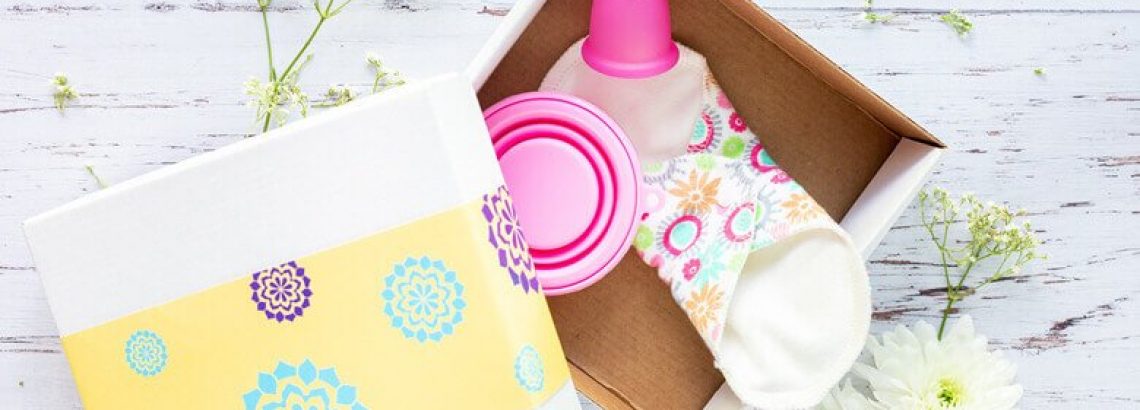As women, we’ve been taught to think of our menstrual blood as something to hide and be ashamed of. It was out of this approach that nurses in America invented single-use menstrual pads in the late 1880s, and later on, the tampon.
Throughout the century, we’ve been fed commercials showing women (supposedly on their periods) in white clothing, running carefree in the fields. Certainly, that is not what most women look like during menstruation, but the advertising worked so well that women all across the developed world adopted the Not-in-my-back-yard (NIMBY) approach, disposing of their blood without giving it a second thought.
On average, women bleed about 60 days per year. Time that by 2-4 menstrual pads they use each day; multiply the result by the number of women in the world (3,710,295,643 !!!) and you get an ecological disaster of colossal damage.
In a matriarchal society, we’d be pouring our blood over planted soil to bless and replenish the fruits of our labor in a ceremonial celebration of feminine joy.
We’d be taking the time off our normal lives to connect with ourselves and each other by bleeding straight to the ground with no barriers, spreading our legs wide open in front of the moon as it purifies our innermost parts with its magical silvery light.
That is the kind of paradigm shift womanhood is so thirsty for, and to my understanding, when that happens, that’s when women will truly regain their power as natural family and community leaders.
The current power shift between the genders may not have reached that far just yet, but along with the general awakening of the eco-movement, more and more women are moving back to reusable menstrual products that make our moon time a lot more friendly to ourselves and the environment.
In the next few paragraphs, I’m going to go over some of the eco-friendly alternatives to single-use menstrual products. If you want to reduce the ecological footprint of your period while maintaining maximum comfort, just keep scrolling and find out about the best options on the market.
Reusable Period pads and panty liners
They come in all shapes and sizes, colors and patterns, with wings and buttons or without them. What started as a trend in the handmade section of Etsy is now a global phenomenon, and more and more brands are raising their heads to compete in this relatively young market.
Using period pads is very simple, but the cleaning is where some women get puzzled. The trick is to soak the pads in COLD water first, without any soap or detergent, and then drain and chuck in the washing machine along with the rest of your laundry. The remaining water is great for watering plants and will enrich any soil with natural nutrients. Learn more about using blood to nourish plants in our biodynamic agriculture course.
With panty liners, things are even easier because they can go straight in the washing machine with no extra steps, so once you’re done you just place them in your normal laundry. It’s tha
Period pads and panty liners often come with a smell proof travel pouch, so you can store them safely in your bag without worrying about the smell when you’re out and about.
Absorbent Period Underwear
It’s basically a similar concept, but its also my personal favorite. You get to enjoy maximum blood absorption, without the bulkiness of a pad between your legs. Some brands use very thin layers of patented fabric, which seems to do the trick for me. I expect that with time, as reusable menstrual underwear become more popular, more and more clothing brands will adopt this trend to show that they care about the environment.
Menstrual Cups
Menstrual cups have been around for about 15 years and have slowly gained popularity as a substitute for the tampon. Menstrual cups are usually made of flexible medical grade silicone and shaped like a bell with a stem. It is inserted into the vagina to collect the blood, which can then be emptied into the ground.
Though some women might find that uncomfortable, it isn’t much different from tampons, and there are different sizes available. Remember that finding the right size menstrual cup isn’t just about your body size. It also has a lot to do with age, sexual maturity, the number of pregnancies you’ve had and how sexually active you are.

The Sherman Technique for controlling menstrual blood flow
This is a completely different concept, but I decided to include it in this list anyway because I think it’s an awesome way of regaining control over your body during your period.
With a few simple breathing and contracting techniques, you’ll be able to force large portions of blood out of your body whenever you need to, for example, before you go to work. Not only will it make your periods shorter and less painful, but it will also reduce the mess and the amount of protection you’ll require. It’s a win-win!
Summary
Reducing the ecological footprint of your period is becoming easier, but what it really comes down to is changing our habits. Which habits would you be willing to change for the planet? And which brands do you find to be the best in this field? Write to me in the comments below and you may get featured in a future post!
Here’s to good menstrual health!




Hi, very nice website, cheers!
Very nice blog post. I absolutely appreciate this website.
Keep writing!